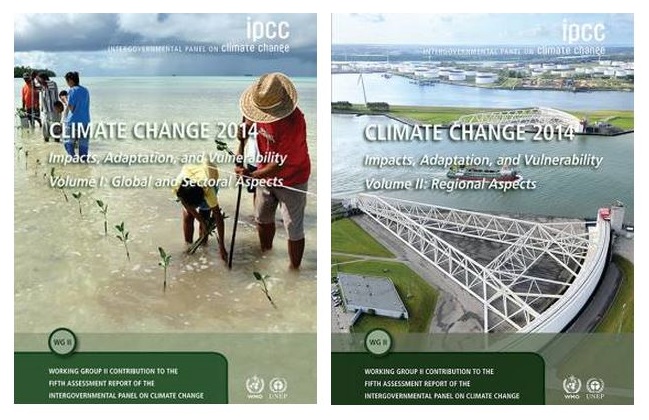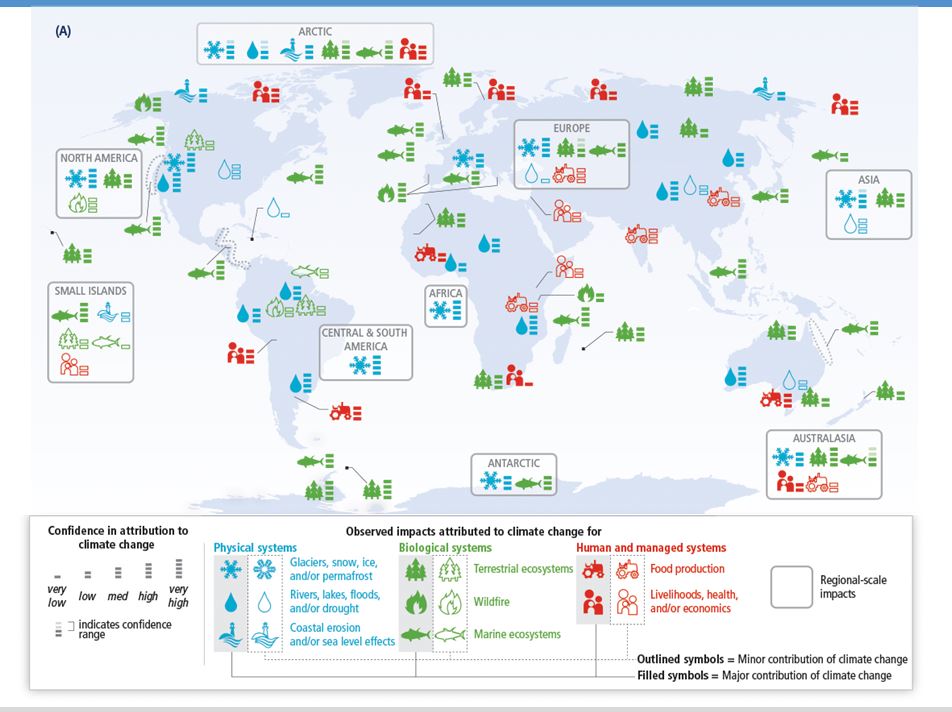“Nobody on this planet is going to be untouched by the impacts of climate change,” IPCC Chairman Rajendra Pachauri said at the release of the IPCC’s second report.
At the end of March, the IPCC Working Group 2 released their findings on climate change’s impacts, adaptations, and vulnerabilities. It could be their most sobering report yet. The following are some of the most important conclusions about climate change found in the report, including those most relevant for CFE and Save the Sound.
Working Group 2 – Impacts, Adaptation, and Vulnerability
– We’re already experiencing climate change across the world, from melting ice to more severe storms. According to The New York Times, the IPCC “emphasized that climate change is not just a problem of the distant future, but happening now.”
– Some people and groups are more vulnerable to climate risks, especially the poor, the young, and the elderly. People who live in low-lying coastal areas and on small islands are in more danger too, since they’ll experience more frequent and intense storm surges, coastal flooding, and the daily effects of sea-level rise.
– With more warming will come more climate refuges (people leaving their homes because of climate-related reasons, like extreme heat) and possibly more climate-related violence because of exacerbated poverty and competition for limited resources like clean water.
– Global food crops, like maize, wheat, and rice, are at risk and their success will be more unpredictable. Particularly in poor areas, this will lead to increased malnutrition.
– People will be less healthy for a variety of reasons. Heat waves, decreased food production leading to malnutrition, and changing patterns in water- and pathogen-borne diseases will all make people sicker.

Climate Change in Connecticut
Christopher B. Field, co-chairman of the working group that wrote this IPCC report, said “I think that dealing effectively with climate change is just going to be something that great nations do.” Here in Connecticut, we see the causes and effects of climate change on multiple fronts and we remain committed to addressing climate change in all of our work.
– The oceans are becoming more acidic as carbon dioxide levels rise, harming creatures like oysters, which can’t grow calcium-based shells in acidic water. Species in Long Island (and the jobs that depend on them) could be devastated.
– Fisheries will likely change in a warming world: some species could become extinct and others could move to cooler waters. Long Island Sound has already seen some tropical species in the summer months, and other species are becoming more abundant farther north instead of in the Sound.
– As the gateway to New England, and as a home to many New York City commuters, our roads are often clogged with heavy congestion. We have been working with legislators in Hartford to increase investment and support for bus and train public transportation initiatives across Connecticut.
– Many of our Long Island Sound towns have suffered severe damage thanks to extreme weather and coastal flooding. Our coast will only be more at risk with as sea level continues to rise. We work with coastal communities to restore critical habitats such as wetlands and rivers that will act as buffers and absorb flooding, and advocate for common-sense flood proofing in low-lying areas.
– We helped draft our state’s Global Warming Solutions Act in 2010 and have successfully advocated for a number of clean energy programs over the years, including expanded access to solar power and the end of a moratorium on wind turbine construction, the only ban of its kind in the nation.
– We find ourselves with extreme weather events and unseasonable temperatures more often than we used to. Storms Irene, Sandy, and the Halloween Blizzard wreaked havoc in Connecticut, extended heat waves have become the norm during the summer, and the words “Polar Vortex” still sends shivers down our backs.
Read our summary of IPCC WG1’s “The Science of Climate Change” and look for a summary of WG3’s “Mitigation of Climate Change” in the coming days.

Posted by Tyler Archer, Outreach & Development Associate for CFE & Save the Sound.

2 thoughts on “The IPCC’s Fifth Assessment Report on Climate Change (Part 2)”
Comments are closed.